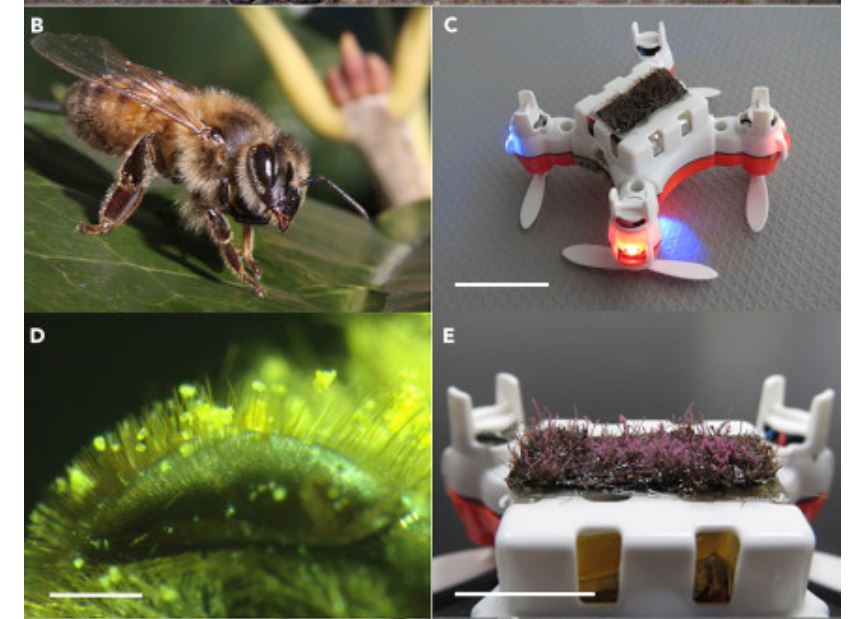
Bees, move over. A lily has been pollinated by a remote-controlled flying robot. The robot is hairy, just like a real bee, and sticks to pollen by virtue of an ionic liquid gel, whose fabrication is discussed by Svetlana Chechetka et al. in this issue of Chem.
| Author(s): | Amador, Guillermo J. and Hu, David L. |
| Journal: | Chem |
| Volume: | 2 |
| Number (issue): | 2 |
| Pages: | 162 - 164 |
| Year: | 2017 |
| Bibtex Type: | Article (article) |
| DOI: | https://doi.org/10.1016/j.chempr.2017.01.012 |
| Electronic Archiving: | grant_archive |
BibTex
@article{AMADOR2017162,
title = {Sticky Solution Provides Grip for the First Robotic Pollinator},
journal = {Chem},
abstract = {Bees, move over. A lily has been pollinated by a remote-controlled flying robot. The robot is hairy, just like a real bee, and sticks to pollen by virtue of an ionic liquid gel, whose fabrication is discussed by Svetlana Chechetka et al. in this issue of Chem.},
volume = {2},
number = {2},
pages = {162 - 164},
year = {2017},
slug = {amador2017162},
author = {Amador, Guillermo J. and Hu, David L.}
}
